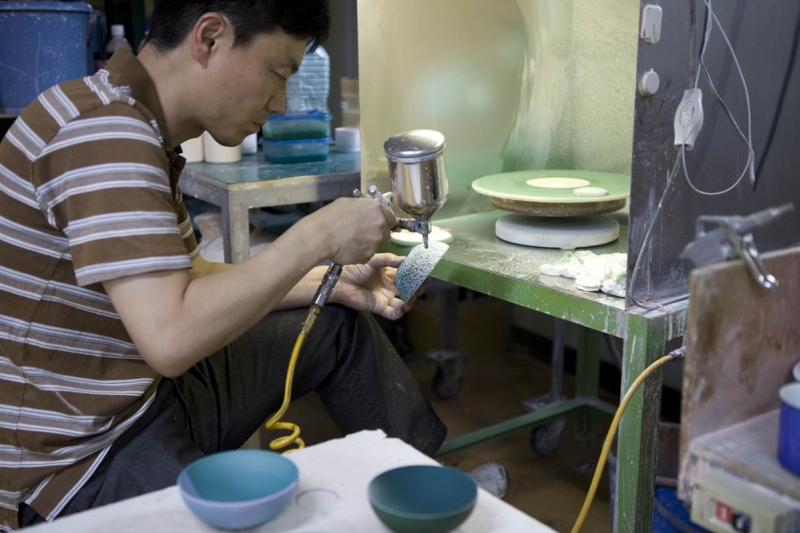Interview: Kirstie van Noort
Kirstie van Noort considers herself a researcher as much as a designer. For 2016/ she has brought her exhaustive and inquisitive methods of material study to Arita and applied them to the porcelain industry there.
- You have studied porcelain production before in your work-can you tell us a little about that?
Before I began the project in Arita I was in Cornwall, England. What amazed me about the industry there was the ratio of waste materials created; In Cornwall, for every 1 kilo of porcelain produced, 6 kilos of waste is generated. I created a project that was about making use of this waste (the last two photos of the slideshow). The Creative Director of 2016/ saw this project and invited me to bring the same concept to Arita.
- Was the production of porcelain in Arita similar to the processes you had witnessed in England?
No, it was completely different. In Arita there is almost no waste at all; the clay is so pure, it is very special. I visited several porcelain factories during a month long visit to Arita and I found that very little waste was generated in any of them. So I had to think how I could apply my concept within this context. I managed to find small amounts of 3 different types of mineral waste and so I looked into these materials in more depth at the research centre in Arita. I then use them as ingredients in the final products to give a colour and structure palette that is specific to the Arita porcelain.
- Your perspective on this project is so very different from that of the other 2016/ designers, what did the craftspeople in Arita think of your process?
It was hard to explain at first. Also, I am young and this is my first commission and also my first time in Japan, so I was excited but nervous also. However, I am also a potter myself and so that was helpful to me when explaining myself and also in understanding the Arita craftsmen and women’s way of working. I have my own way of working with the clay and the people there have their own way too but we learnt from each other during the project.
- Can you tell me a little about the pottery in Arita that you were partnered with?
The pottery I have worked with is known for experimenting with raw materials. Next to their big commercial kiln is a huge old authentic kiln in Imari, once a year they fill this kiln with their own developed colors and glazes. The outcome is always different and surprising. So that investigative approach is a real connection between us.
- Is examining the processes of making at the heart of all your work?
Most of my work is about the concept. I like to tell a story through the process rather than get caught up in trying to find the perfect shape.
- What is the particular appeal of porcelain for you?
I studied at Design Academy Eindhoven where I had a great teacher and I worked with porcelain there for the first time. Porcelain has great fascination for me; I enjoy the technical element of working in porcelain and also witnessing the transformation of the powder into clay, into liquid then the super hard, almost like stone, final material. And of course it is very hard to work with and for me it was a challenge to experiment with the material and to treat it well. I think that is why I continue to work with this material.












